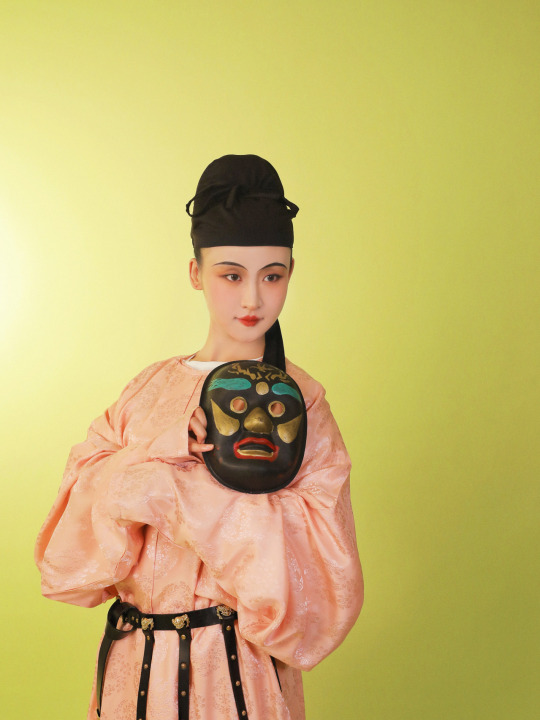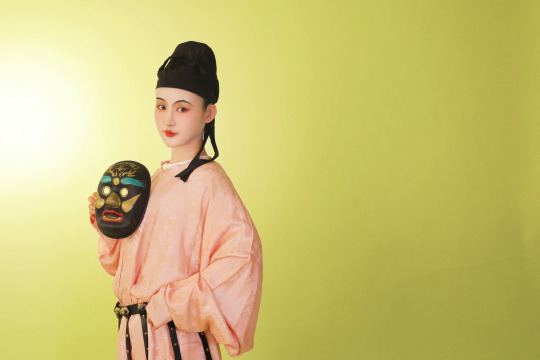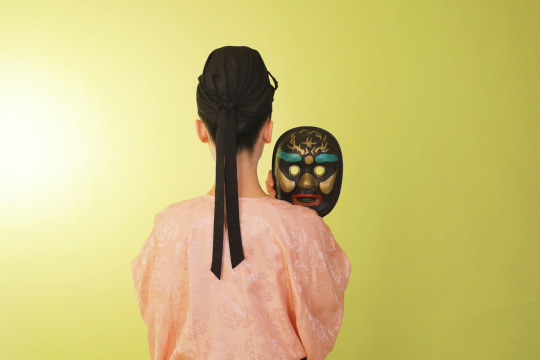#云水Photo
Photo
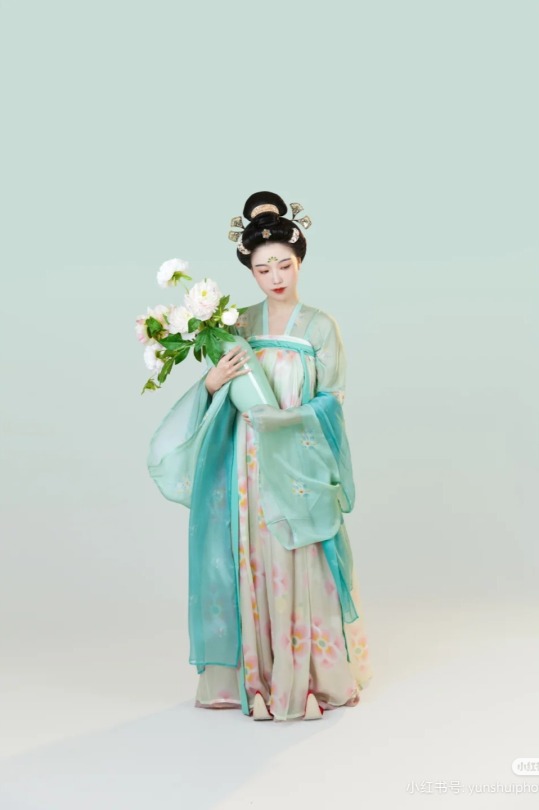

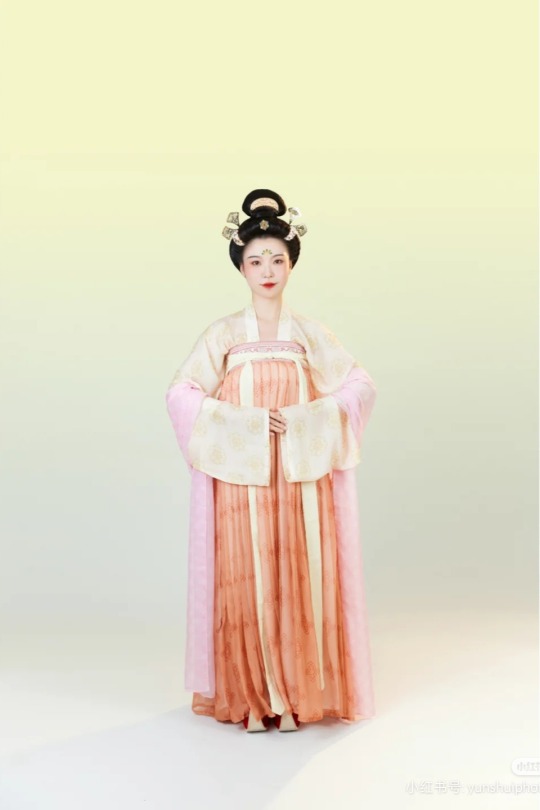
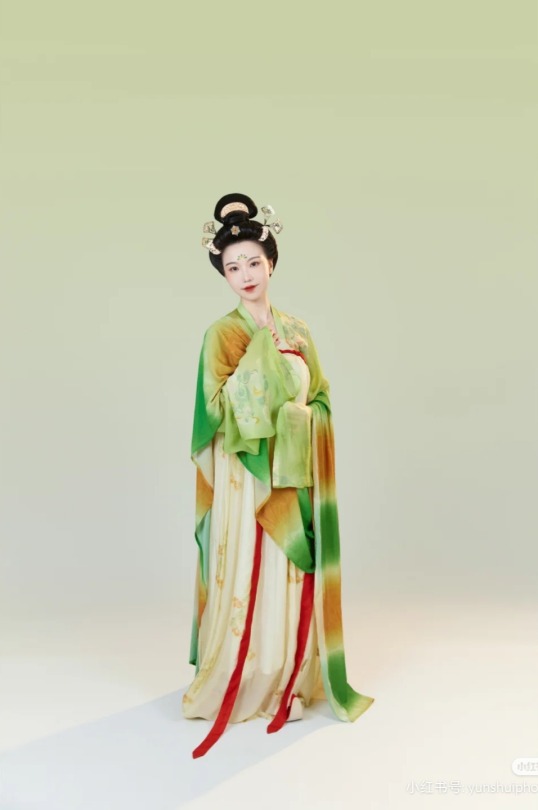

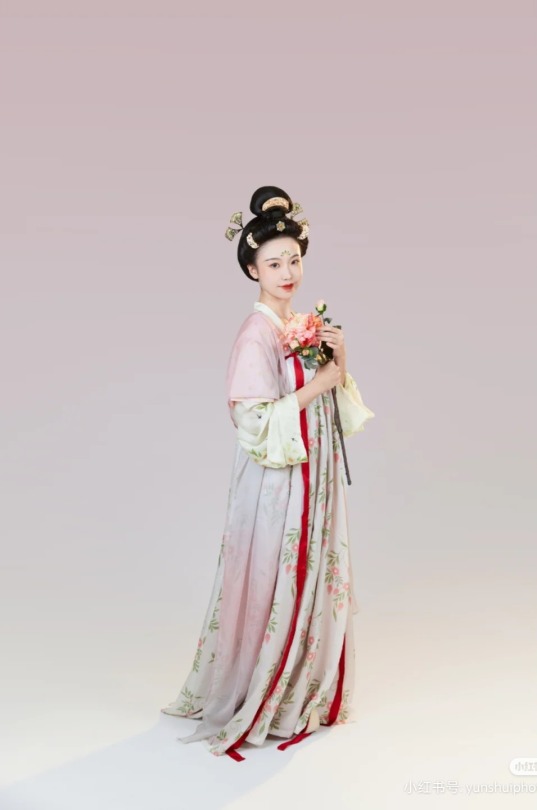
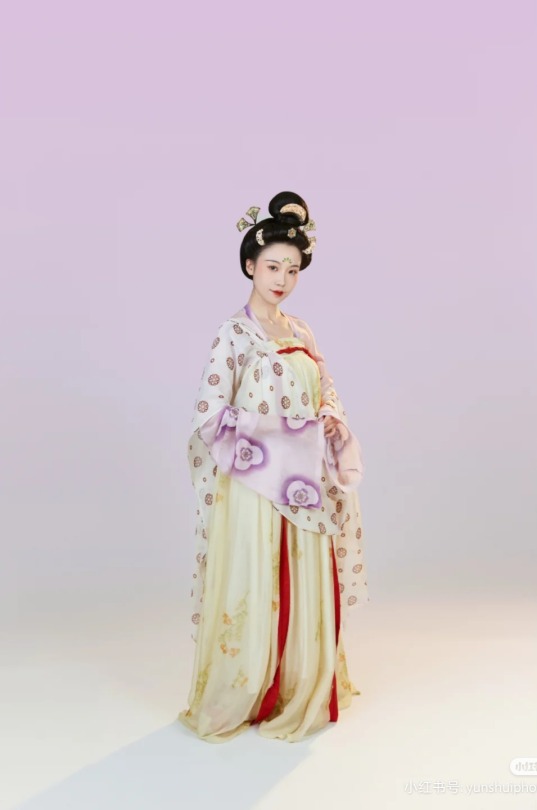



[Hanfu · 漢服]China Tang Dynasty (618–907AD) Chinese Traditional Clothing Hanfu & Hairstyle Photoshoots
Which one is your favorite 💖?
_______
📸Photo: @云水Photo
🧚🏻 Model :@雪樱樱呀
🔗XiaohongShu: http://xhslink.com/mhSaIm
_______
#Chinese Hanfu#chinese traditional clothing#chinese historical fashion#Chinese Aesthetics#chinese culture#hanfu#hanfu accessories#hanfu photoshoot#Chinese Style#汉服#漢服#云水Photo#雪樱樱呀#Tang Dynasty (618– 907 AD)
157 notes
·
View notes
Text
On a couplet from the Yuelu Academy
by 旷敏本 (Kuang Minben,1699 - 1782)
是非审之于己,毁誉听之于人,得失安之于数,陟岳麓峰头,朗月清风,太极悠然可会;
Right or wrong, examine it yourself. Ruin or acclaim comes from the decisions of others. Gains and losses are predestined - accept them with equanimity. Ascend to the peak of Yuelu. The moon is bright, the breeze refreshing. The Zenith may be met with, leisurely.
君亲恩何以酬,民物命何以立,圣贤道何以传,登赫曦台上,衡云湘水,斯文定有攸归。
How can we repay the kindness of our leaders and parents? How can the life of the people be firmly established? How can the way of the sages be transmitted? Climb atop Hexi Terrace. The clouds of Mt. Heng, the waters of River Xiang; for sure, the educated have responsibility.
...........................................................
This post is dedicated to @liberty-or-death who dug a hole for me on the last day of 2022. Thanks friend xD
(The reason I was excited to see this place mentioned in that article was because it’s on my travel wishlist.)
Background
Yuelu Mountain (岳麓山) is located on the west bank of the Xiang River at a tributary of the Wu River in Changsha, Hunan, and is noted for its many scenic spots. Located at its foot is the Yuelu Academy (岳麓书院), officially established in 796 CE during the rule of Emperor Taizu of Song. It is one of the four famous academies in ancient China - the others are the Bailudong, Songyang and Suiyang Academies. But among these academies of classical learning, Yuelu is the only one to have evolved into a modern institution. Today it is known as Hunan University.
The Hunan University campus, in their own words, combines ancient architectural complexes and modern facilities. Many of the original structures of Yuelu Academy were preserved, and now open to the public. Here’s a video of a walk through the school! (x)
If you don’t need english subs, there is a wonderful MangoTV documentary on Yuelu Academy available on youtube.
The academy was frequently renovated throughout its >1000 years of existence, and many of the current buildings were constructed during the Qing Dynasty. The main Lecture Hall, also called the ‘Hall of Loyalty, Filial Piety, Integrity and Chastity’, is a core building of the Academy. It is located at its heart, and was the most important place for teaching and momentous ceremonies.
A horizontal plaque with imperial inscriptions from the Kangxi Emperor hangs in the front of the hall. On the inner walls of the hall, there are four big Chinese Characters - I can’t really tell if they were engraved or painted - loyalty, piety, honesty and integrity (Simplified: 忠孝廉节 | Traditional: 忠孝廉節). They come from the hand of the great scholar Zhu Xi of the Song Dynasty. Zhu Xi along with Zhang Shi gave the first ever joint lecture in the history of Confucian academies in this place.
And it is within this Lecture Hall, placed on either side, between the words piety & integrity, and loyalty & honesty that these this yinglian (楹联), a type of couplet, is pasted on the walls on either side. It was written by Kuang Minben, who passed the entry level examination at the age of 24 and was recommended into the Imperial Academy the following year. During this time, his studies were interrupted by the death of his father and requisite period of mourning. He later passed the imperial exams at the age of 37 and joined the Hanlin academy as an apprentice writer, though had to retire for health reasons. 18 years later, at the age of 55, he was engaged as principal (山长) at Yuelu Academy in the year 1754. He went on to lecture there for three years before the death of his mother. It was during this period of his life that he wrote the couplet that now still hangs in the Lecture Hall.
Actually, the couplets that are there now are a copy carved in 1983 as the original was destroyed in the Sino-Japanese War.
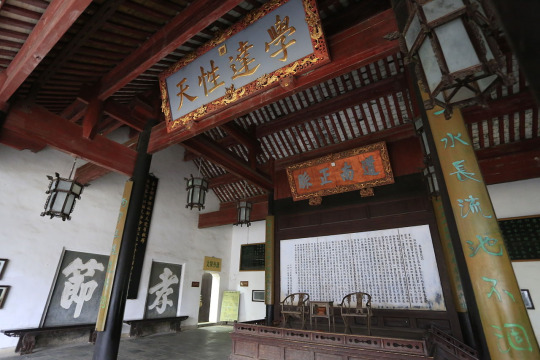
Here’s a photo of the Lecture Hall from the academy’s Chinese wikipedia page.

From twitter user 徐昕 @xuxin1970
① 是非审之于己,毁誉听之于人,得失安之于数,陟岳麓峰头,朗月清风,太极悠然可会;
② 君亲恩何以酬,民物命何以立,圣贤道何以传,登赫曦台上,衡云湘水,斯文定有攸归
If for some reason, you’re wondering about the placement of the letters and the couplets…
Exit for the hall
廉 節
① ②
忠 孝
Head of the hall
This seems to follow the principle of seating on the North (head of the hall), facing the South (exit), and then the left (East) as superior to the right (West).
Brief Translation Notes
This was a rough translation as working on this couplet was a very spur of the moment. Here is how I understand it and maybe other interesting things.
For ①
On the rights and wrongs of a matter, one should examine (审) it inwardly with one’s own judgment [internal]. Whether one ends up ruined for it or acclaimed, that outcome lies with others [external]. And whatever one will gain or lose in this is up to the Heavens (数), and ought to be accepted with equanimity (not in our hands anymore, so be chill about it). Having done this, one steps out and up the mountain, finding that they have reached the utmost goal in becoming one with nature (太极).
You might have noticed the plaque with the inscription of 学达性天 above the hall in blue? That was mentioned before as being bestowed by a Qing Dynasty emperor. But this has also been the ultimate goal of Confucian and Chinese education for thousands of years. It’s a reference to both the Analects and Doctrine of the Mean; through learning to live properly as humans, we may reach our original heaven endowed nature and become one with nature, which is also being attuned to the Way of heaven. So, a maxim for educational goals in a lecture hall supported by the couplets also hanging in the same room. That’s the intention, and how do we reach it? By keeping at This.
When a person has reached that state of mind and state of being, even in the face of difficulty or problems regarding ethics, reputation, temptation and so on, they can face it unaffected and calm.
For ②
The earlier part was on an individual level. What someone can do for themselves. But in order for one to exist and be in such a position, they owe it to their ruler / their lord and then their parents for giving body and life. This half of the couplet pair is about responsibility. That a person who cares for the world around them will wonder how to make it a better place to live in, ensuring stability and that the good way of living is widely practiced and passed on. Go out to Hexi Terrace and look: the mountain is still beautiful, the river still flows. Certainly, the educated have a responsibility and their rightful place*.
*The word 攸归 comes from the idiom 责有攸归 (zé yǒu yōu guī) literally, responsibility has its rightful place ie. with the correct person.
Now’s the time to mention: It’s the furthest thing from easy that Yuelu Academy still stands today. You can read about its history in this article. The original Hexi Terrace too. The structure that exists today is, in fact, Hexi Terrace 3.0 and is not even in the original location anymore. It was originally at the peak of Mt. Yuelu, where Zhu Xi liked to climb to watch the sunrise (hence its name of sunrise splendor). Then war came, there was restoration work, a tower was built in its place (though the function of this location remained the same), and the terrace was rebuilt at the foot of the mountain in the form of a pavilion. Hexi 2.0 was destroyed in the Sino-Japanese War, and Hexi 3.0 is actually an existing stage that was renamed in memory of 1.0 and 2.0.
I am reminded actually of a song that goes ~ be your own light ~. That light should shine from within. Observe and contemplate, and at the same time cultivate yourself both in education (knowledge) and character. Be your own light, and next step… the world!
#岳麓书院#Yuelu Academy#Couplets#poetry#i don't even know how to tag this#an end of year translation from left field LOL#i spent the afternoon thinking about this#lmaoooo#yiliiiiiiiiiiiiiiiiiiiiiiiiiiiiiiiiiing#commentary#poems
29 notes
·
View notes
Text
海妖故事(Siren)

photo by @SivLestor on Twitter
海妖故事
众所周知,人是神捏造出来的,而所有的野兽,则是神的孩子们捏造出来的。因为捏坏了也没关系,扔进海里就好了,没有人找得到。况且以孩子们的想象力,你们也知道,他们捏的野兽,不到饿死也不会张开嘴,不到地震也不会跑出窝,当然也不会有任何关于繁育后代的记载,所以很快就会灭绝。
它们只有一个问题,就是它们长得太像人了,但又不是人,而人们害怕这样介于两者之间的东西。这些东西就像修行未满就馋了人肉的妖精,这样的东西混入人群中,必然是图谋不轨。
她是一群海洋生物的公主,像所有公主一样,以为别人对她的爱都是理所当然的,尽管她的族人都是一群没有脑袋,甚至没有躯干的水母。当然她的天真也是理所当然的,继承的是捏她的那个孩子的天真。
她在一次惨烈的船难中救下了一位王子,但当然,没能救下其他人。她载着王子回到那些翘首以盼的海民面前时,他们一眼就认出她是这场风暴的始作俑者,是海中的女妖。
她没有语言,就只能试图用歌声劝服人们,的确,听了她歌声的人们都平静而沉默了。但捂住耳朵的人们说这是邪恶的诱惑,是妖言惑众。
所以人们逮捕了她,要烧死她。
人们发现她的身体太柔软光滑,没办法捆住她,于是便把她塞进一口混着刺激性药剂的大锅,然后慢慢煮,看着她被煮透。人们确实看到她在哭号声中一点点融化,一点点被淹没在沸腾的水中,但当水烧干的时候,里面什么残渣也没有剩下。
有人担心她是不是用了什么法印逃走了,但更多的人认为这代表着患难完全地消除了。
不过,自此之后,一个差不多的传说还是留了下来,说一个女妖在��石上唱着蛊惑众生的歌谣,导致王子的船只触礁沉没,但王子用强大的意志力克服了诱惑,并把女妖抓了回来,得以正法。
而当这些传说在诸城列国上方的空气中飘扬的时候,女孩也重新在云端凝结。她的身体的确有80%是水做的,烧是烧不死她的,但至今,她身体里剩下的20%都是搅在一起的烈性药水,在她的胸中翻涌沸腾,五脏六腑拧作一团,堆起了难以熄灭的愤怒。
她重新凝结的时候,正身处一片平静无比的水域,四周飘散着薰衣草香气的烟雾,水温舒适���人,催人入梦。但她内心没法平静下来,她只想掀起轩然大波,淹没陆地上那些狂妄迷信、自以为是的城镇。
但她做不到,这水面对她来说就如同一面没有潮汐的汪洋,她无论怎么扑腾也掀不起什么水浪。
直到她看见一列雪白的山脉,悄无声息地从天边驶来,缓缓坠入这片汪洋。那荡起的波纹瞬间推得她好远,她甚至看到一些水溢出了海的边缘,哗啦啦地落到地面,形成雨滴。
这些山脉连成了一双巨人的腿、一双巨人的胳膊,都杵进深不见底的地方。一时间,水面浪涛汹涌。直到那个巨人坐定,优雅地用手撩起温水,淋在自己的身上,水面才渐渐重归平静。只剩两座硬挺的丘包间,还淌着一道不紧不慢的瀑布。
女孩惊呆了,她无法透过云雾看清巨人的面庞,但隐约之中,那个巨人应该有着一副温柔的眉眼、红彤彤的脸颊和洋溢着幸福的嘴角。
此时女孩的胃又翻腾起来,她感到内心深处的愤怒中,又浮起一层委屈的酸味和不满的咕噜声。
于是她奋力向着那个巨人游去,游过她双膝隆起的孤岛,游过她大腿劈开的海峡,她终于游到了她的身前,瞄准她双峰间的那道沟壑,一股脑钻了下去。
她接着往下潜,往下潜,直到看见巨人的一只手正挡着一处幽暗深邃的洞穴。
她的直觉告诉她,那就是这个巨人最脆弱的地方,只要触及那里,就能把整个人间和天堂搅得天翻地覆,混沌如粥,就如她和煮进她身体的那锅药水一样。
于是她钻了进去,像滑溜溜的泥鳅,又像伊甸园的蛇,在这条狭长的通道里来回穿梭,翻滚打转。她高速地掠过那些螺旋盘踞在内壁上的海葵,拍得它们表面的电流滋滋作响;她又潜入黝黑的褶皱深处,把富集在体内的神经毒素涂上这里的末梢,就像抹在锅底预热的黄油;然后她用那八条大而柔韧的触手,攀向最深处最明亮的那颗珍珠,用肢腿带动着躯干,牢牢地扣到上面,然后用胯下那张竖贯腔肠的大口张扬地捉弄起这颗明珠。
这颗明珠仿佛就是整艘宇宙母舰的操控球,她看到整个通道因此而不由自主地膨胀和扩张,撑开了最远端的入口,路上的那些褶皱也尽数舒展开来。渐渐地,她感受到整个舱室上方传来徐徐的颤抖、短促的抽气和一股接一股的热浪。
然后,整个舱室竟摇摇晃晃地飘了起来——非常的摇晃,摇得令人头晕目眩。
紧接着,伴随咣当一声巨响,和接连不断的哗啦啦的溪流声,这个庞然大物悬停住了,远处的洞口闯进来刺眼的光芒,舱室的水流如同被抽进真空一样迅速流走。颤抖停止了,温度还没有消散,那些海葵瓣还在滴水,重新收缩的褶皱挤压出了剩余的黏液。
她以为一切都结束了的时候,只听见一个男人般低沉的声音突然在头顶轰隆炸响,语气里掺着愤怒、不安、质疑和担忧。接着是另一个女人的声音在整个空间里回荡,虽然黏糊糊的,口齿不清,但从她的脑袋到她附着在珍珠上的口器,无处不感受到那从高处传来的余震。
随即她看见一只大手——一只粗糙且沟壑纵横的老手钻进这个深邃的舱室,把深处的她揪了出来。
“你知道你做了什么吗!”
那吼声还是震天巨响,说话的人太大了,她的眼睛根本无法聚焦到完整的这个人。
然后这个大人物提着她看向云朵下面的陆地,那个曾经喧闹不休、灯火通明的城镇,如今只有一片死寂,和上面一层幽幽的碧波。
她毁灭了那个曾经痛恨她、视她为妖怪的文明。
当然,揪着她的人对此很不高兴。
于是她跟他说了是他们活该,说了她做的事和他们在她身上做的比起来,简直不值一提。(是的,神都能听懂其下所有低等生物的语言)
她希望他能理解她,也希望他能解掉在她身上不断蒸发和凝结的永生诅咒,她不想再被身体里的毒药永无止尽地折磨,她想做个了断。
大人物听明白了,他理解了人类所不能理解的东西,但他还是把她安排到了遥远的海域最深的迷雾中,赐予她“应有的”惩罚,但也允许她用自己的方式寻求解脱。
他最后撇下了一句话, “其实我理解你没有用,你得让那些人类理解你。”
于是她在那片孤独的迷雾里,尝试了一种又一种独特的信号寻求帮助,她模仿小女孩求救的哭声,用浮木拼出船只在迷雾中的影子,甚至用抓来的鱼,一只一只地铺出一条通往她所在礁石的小路,或者干脆就拼命地挥舞起自己的肢手,仿佛多用几分力、多几条胳膊就会多几丝希望一样,但没有人会为了这些就闯进这片未知的海域。
到很久以后她才明白那个大人物说的,要用什么才能换取人类的理解。
久而久之,海上便又多出了一个美人鱼的传说,说在遥远的海域有一片没人敢涉足的迷雾,早先有人以为那里盘绕着早死的冤魂、神出鬼没的海盗船,或是多手的海怪,但现在那里只有一串永不停歇的美妙歌声,只要你闭着眼,遵循歌声的方向,就不会迷路,它会指引你走向这世界上唯一的那条美人鱼,那时候你就知道,这一切的冒险都是值得的。
虽然她实际上看起来更像是一只硕大的水母,但显然说成是人鱼的样子更容易让人接受。
她的歌声吸引来了无数的冒险者、英雄、海盗,或是普通渔家的叛逆青少年,她曾满怀憧憬地期盼着能从高贵的皇室、朴实的渔夫、甚至是巫师的幽灵那里得到人类文明的关怀,找到解脱的答案,而她也为此做出了一些交换。
而她现在只希望在每次人们心满意足地离开之后,留在她体内的东西,能短暂地中和掉腹部深处未曾止尽的酸蛰。
直到有一次,两艘船同时顺着她的歌声钻进了那片幽深的迷雾,为了争抢她,他们相互开炮,击中了她所在的礁石,击碎了她的枷锁,她逃了出来。
她顾不得体内浑酱酱的感觉,说实话,她其实也已经习惯了。她只是想游到外面,去拥抱一下外面广阔的海洋,去呼吸一口新鲜的空气,看看好久都没看到的太阳。
可是当她终于重新见到外面的太阳的时候,却只见一道水幕攀天而起,誓要吞没日月,然后向她和她身后的大陆席卷而去。
她抬头望了望那水幕上方厚厚的云层,没有看见什么突然闪起的灯光,也没有什么慌乱的碰撞;没有女人的惊呼,也没有男人的咒骂;只有咕咚咕咚的流水声,就那么放着,一直流,一直流。
0 notes
Text
Must TRY Genting Gohtong Jaya FOODIE DZH Fish Village Restaurant 云顶半山美食分享 山水鱼庄餐厅
Must TRY Genting Gohtong Jaya FOODIE DZH Fish Village Restaurant 云顶半山美食分享 山水鱼庄餐厅
Gohtong Jaya foodie, nice environment.
This place is quite special because we have to walk into this place.
Let’s selfie
Nice place to take photo
Chinese tea pot 茶
Braised vegetable with red fermented bean curd 南乳素寨煲
Must Order this ✓✓This braised vegetable with fermented bean curd very nice 👍 my daughter can eat slot vegetable and carrot 🥕 main thing is this pot have variety of vegetable,…

View On WordPress
0 notes
Photo

日出 by vcg-phoenix6144 //
4 notes
·
View notes
Photo

你好!2019 by d149c8d5c47eaaab5fca4f86b8a461780
1 note
·
View note
Photo

Late Ming Dynasty Hanfu 🌸💗💖 Credit: 云水Photo @ Xiaohongshu App 分享汉服无商用, 如果侵权马上删除 . . . #hanfu #汉服 #style #hánphục #漢服 #china #chinese #chinesestyle #beauty #photography #traditional #dress #chinesedress #chinesegirl #fashion #beauty #traditionalclothes #chineseculture #photoshot #chineseart #hairstyles #girl #hairstyle #art #chinesehistory #mingdynasty #중국 #chine #中國 #한푸 #漢服チャレンジ https://www.instagram.com/p/CcLS65fJJac/?igshid=NGJjMDIxMWI=
#hanfu#汉服#style#hánphục#漢服#china#chinese#chinesestyle#beauty#photography#traditional#dress#chinesedress#chinesegirl#fashion#traditionalclothes#chineseculture#photoshot#chineseart#hairstyles#girl#hairstyle#art#chinesehistory#mingdynasty#중국#chine#中國#한푸#漢服チャレンジ
25 notes
·
View notes
Text
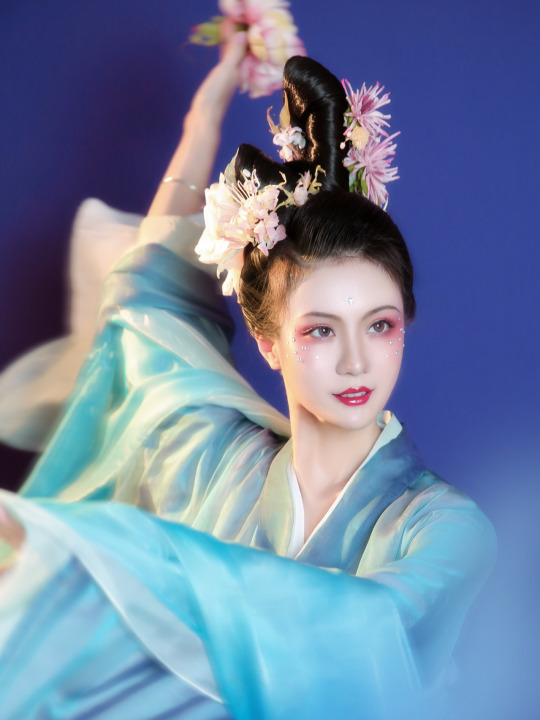
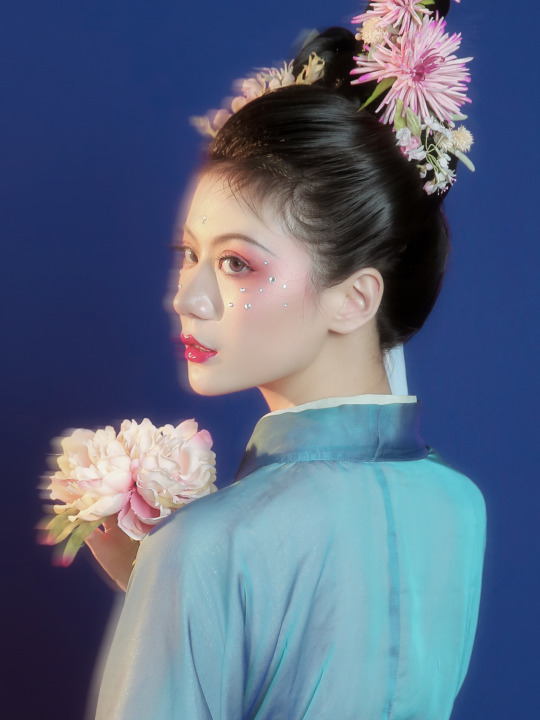



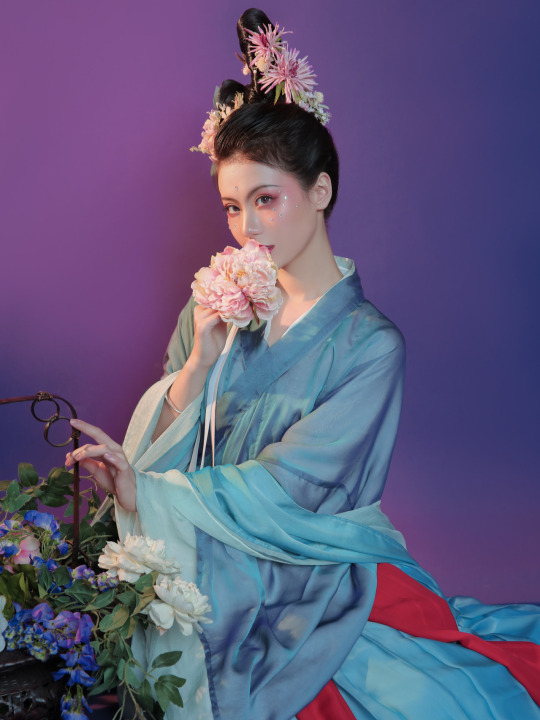

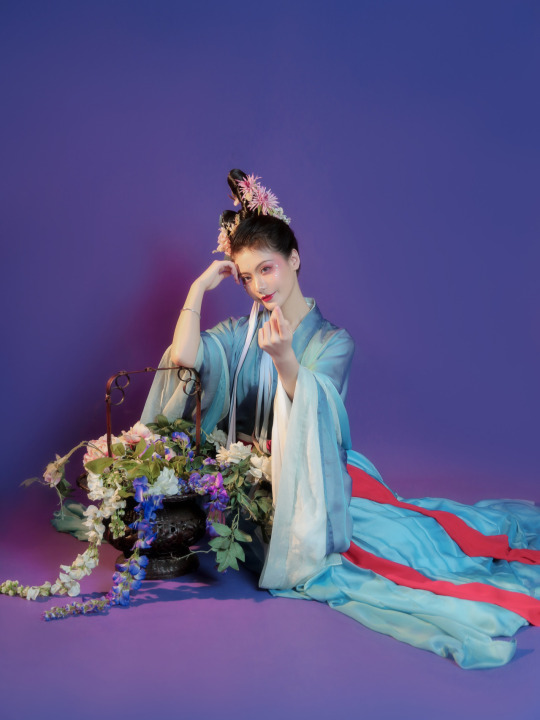

Ancient Hanfu Photography
from: 云水photo
#hanfu#hanfu girl#chinese clothing#beauty girls#chinese han clothing#chinese hanfu#traditional chinese art#photography
174 notes
·
View notes
Text
Nampō Roku, Book 6 (58): the Conventions Associated with the Daisu Established the Precedents for Chanoyu in the Sō-an.

58) In the case of the daisu, [when entering] from the mo-biki ō-do [裳引ノ大戸], with respect to the foot with which one steps into [the shoin], it is different depending on [whether the setting is] yin or yang¹.
And again, the shoulders of ones suikan [水干] or suō [素袍] should be raised toward the shoulders [by tying the sleeves back with a cord]²; while on the far side of the ōdo, everything should be readied carefully³. [In the case of the daisu,] these [preparations] will likely be difficult to do.
People like this monk will never use [these kinds of daisu temae during a gathering], so it is rather useless to study [them]. However, whether [preparing tea] in the sō-an, or laboring to [serve] tea with [ones sleeves tied up with] a tasuki [襷], it must be said that the suikan and suō, and such things, represent the ancient way [of serving tea].
_________________________
¹Daisu ni mo-biki no ō-do yori fumi-komu ashi in-yō no betsu ari [臺子ニ裳引ノ大戸ヨリフミ込ム足陰陽ノ別アリ].
Mo-biki no ō-do [裳引の大戸] this is the door through which the person who will serve tea in the shoin enters (it is found at the bottom of the following sketch).

The mo-biki no ō-do is the shoin’s equivalent of the katte-guchi [勝手口] (sadō-guchi [茶道口]) of the wabi rooms.
Fumi-komu ashi [踏み込む足] means the foot with which one steps into (the room).
In-yō no betsu ari [陰陽の別あり] means it is different depending on whether the situation (or setting) is yin or yang*. Yin means that the side wall (or, in this case, the bank of shōji) is on the left (because one steps in using the foot on the side closest to the side wall); yang means that the wall or its equivalent is on the person's right (hence he steps into the room with the right foot)†.
__________
*Tanaka Senshō establishes the precedent with respect to the two staircases that lead from ground level up into the Shishin-den [紫宸殿] (the throne-room of the Imperial Palace) -- one of which is on the eastern side of the hall (the Emperor's throne, deep within the hall, faces south), and the other of which is on the western side of the façade. An official mounts the eastern staircase starting with the right foot; and the western staircase with the left.
In other words, with the foot that is closest to the eastern or western wall is the foot with which one begins the ascent.
†Though some modern schools have erected their own rules, in general this is still the same today -- the person steps into the room using the foot closest to the side wall (and, when exiting, it is that foot that remains in the room last).
²Mata suikan・suō no kata wo aguru koto mo [又水干・スハウノ肩ヲアグルコトモ].
Suikan・suō [水干・素袍] are garments: suikan [水干] refers to the everyday garment worn by members of the nobility*;

suō [素袍] was the ceremonial dress of the lower ranking samurai†.

This describes the sort of clothing that was worn to chanoyu during the fifteenth century, when the practice of tea was largely restricted to the noble classes (and their retainers).
Kata wo aguru koto [肩を上ぐること]: Tanaka Senshō explains that this means the sleeves are tied back with a cord, so they will not get in the host's way while he is performing the temae.
__________
*Depending on the circumstances, and the fashions of the day, the train (the depending fabric panel in the right photo) was often exaggeratedly long.
†When out of doors, the trailing ends of the naga-bakama [長袴] were cuffed internally and tied with cloth strips above the ankles. As with the train of the nobleman’s suikan, the length of the legs of the naga-bakama was subject to the whims of fashion.
³Ōdo no soto ni te toku to shitaku subeshi to iu-iu [大戸ノ外ニテトクト支度スベシト云〻].
Ōdo no soto ni te [大戸の外にて] means on the far side of the ōdo -- that is, in the preparation area.
Toku to shitaku subeshi [篤と支度すべし]: toku to [篤と] means carefully, thoroughly, exhaustively*; shitaku [支度] means get (something) ready, make the preparations; subeshi [すべし]† means should do.
In other words, everything should be made completely ready before the host opens the door and begins to enter the room.
__________
*That is, the host’s preparations of both his person, and the various utensils, must be very thorough.
†A contraction of suru [爲る] + beshi [べし].
⁴Muzukashiki-koto domo nari [ムツカシキコト共也].
Shibayama Fugen explains that this statement means that the preparations, on occasions when one is serving tea in the shoin, using the daisu, are likely to be both vexing or tedious (wazurawashiku [煩わしく]), bordering on the disagreeable (itowashii [厭わしい]).
The purpose of this section is to contrast the necessary level of preparation necessary when using the daisu with the much more casual approach taken when chanoyu is performed in the sō-an [草菴] -- while reminding us to keep in mind that it was chanoyu performed in a suikan and suō that established the precedents behind everything that we do in the sō-an.
⁵Kono bō nado ga yō ni mo naki-koto wo muyō no keiko nari [コノ坊ナドガ用ニモナキコトヲ無用ノ稽古也].
Yō ni mo naki-koto [用にもなきこと] means that (the tea of the daisu) is something that he will never use during a gathering.
Muyō no keiko nari [無用の稽古なり] means that it is useless to practice these kinds of things.
⁶Tadashi sō-an ni te tasuki ni te cha hataraku mo, suikan・suō no kojitsu to ya mōsu-beki [但草菴ニテタスキニテ茶ハタラクモ、水干・スハウノ故實トヤ申ベキ].
Tadashi [但し] means however, be that as it may.
Sō-an ni te [草庵にて] means in the sō-an (this is a parallel construction to the phrase that follows).
Tasuki ni te cha hataraku mo [襷にて茶働くも]: tasuki [襷] is the cord that is used to tie up ones sleeves, so tasuki ni te [襷にて] means when (serving tea) with ones sleeves tied up (as a reference to the tea of the daisu); cha hataraku [茶働くも] means to labor over (the preparation of) tea, to serve tea with (the) great diligence (required when using the daisu).
Kojitsu [故實] means ancient practices, old customs.
Mōsu-beki [申すべき] means should say.
1 note
·
View note
Photo

几 南昌境内的锦江 by vcg-louisphoto http://bit.ly/2RMJerd
0 notes
Text



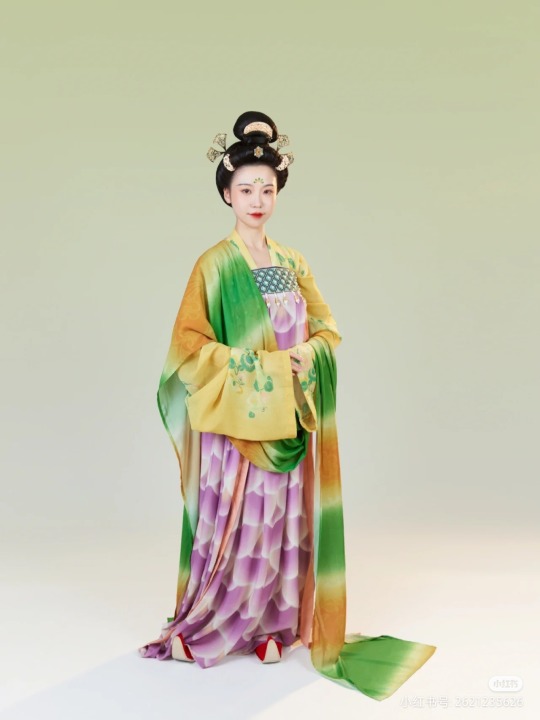





【Historical Artifacts Reference-Skirt Pattern】
China Tang Dynasty Dunhuang Mural:敦煌莫高窟231窟壁画 陰處士父母供养像/Dunhuang Mogao Grottoes Cave 231,Parents of Yin Chu Shi.
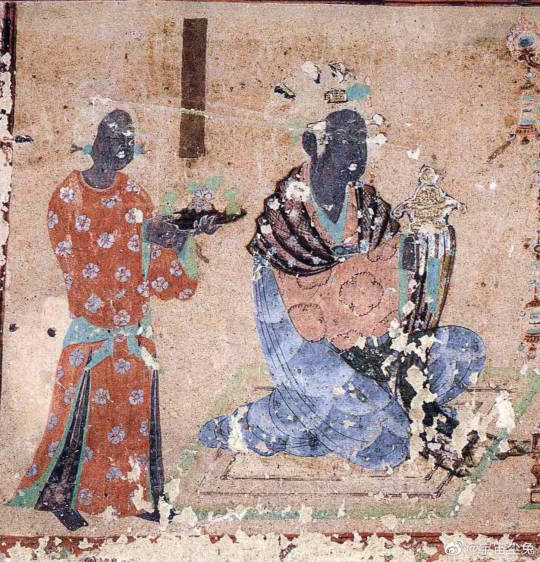
[Hanfu · 漢服]Chinese Tang Dynasty(618-907 A.D)Traditional Clothing Photoshoot
Which one is your favorite 💖?
_______
📸Photo: @云水Photo
💄Styling :@雪樱Makeup
🔗XiaohongShu: http://xhslink.com/OYPsip
_______
#chinese hanfu#hanfu#hanfu accessories#hanfu_challenge#china#chinese traditional clothing#chinese#chinese culture#hanfu history#漢服#汉服#中華風#chinese style#云水Photo#雪樱Makeup
136 notes
·
View notes
Photo

滩涂牛车 by vcg-w590721 //
3 notes
·
View notes


